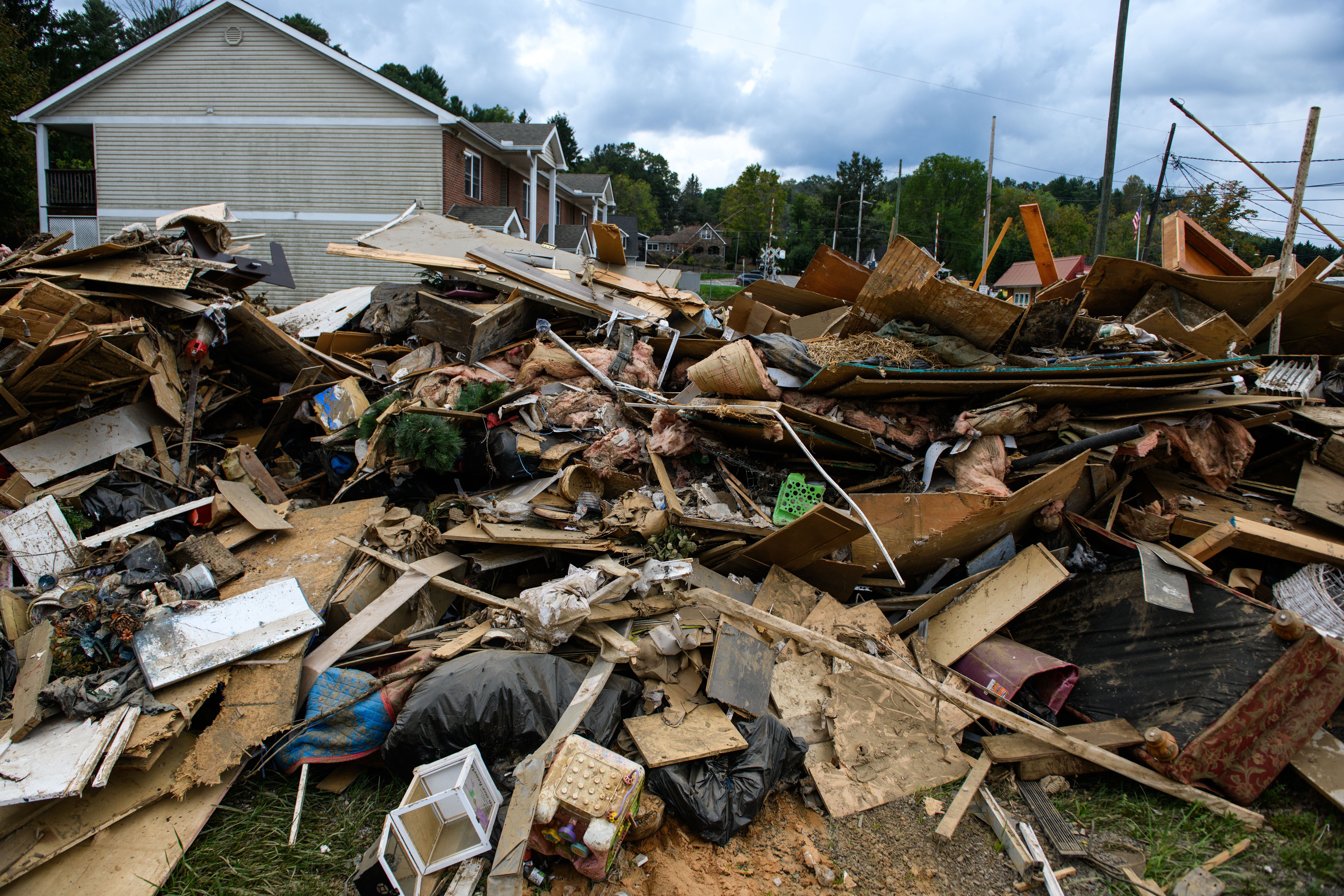Crews in western North Carolina have collected 1.55 million cubic yards, or more than 11,625 Olympic-sized swimming pools, of debris since Hurricane Helene hit in September.
Officials at the state’s emergency management agency said Tuesday that it could pave 62 miles of road with the debris that had been removed.
“Most standard dump trucks hold around 15 cubic yards of debris. You would need over 103,333 dump trucks to haul this load. You get the gist here. It’s a lot,” they wrote on the social media platform X. “But work continues!”
The debris that is retrieved is sorted and as much as possible is recycled. Some can be turned into firewood or building materials. What is deemed hazardous is disposed of by the Environmental Protection Agency.
What goes into landfills is minimized, it noted. The state established temporary debris storage areas to mitigate the amount of debris that was generated. No hazardous materials are brought there.
The state’s Department of Public Safety said in October that it would separate debris into six categories: large appliances, construction debris, vegetative debris, hazardous waste, electronics, and household waste.
FEMA said that thousands of trees would be repurposed and that 320,000 pounds of wood had already been removed by mid-November.
“They’re working seven days a week,” Judy Craze, a resident of Lake Lure, told WTVD on Monday. “Some mornings have been very cold. They are out there early in the morning and I’m like whew, I’m glad I’m in here drinking my coffee and not on one of those barges.”
Asheville’s Citizen-Times reported Tuesday that by November 30, nearly 140,000 cubic yards of debris had been removed from its city limits. The city only recently got clean drinking water back.

A US Army Corps of Engineers (USACE) colonel told the station that they had removed about 5,000 dump trucks of debris, including kayaks, logs, and debris that could be from homes that were washed away.
USACE estimated late last month that there were around 8,000 cubic yards of sand that needed to be removed.
One company, Southern Disaster Recovery, has a plan to burn the organic debris gradually over several weeks. It’s concerned at least one local resident.
“How many pairs of lungs are worth the town saving the money?” Avi Sommerville told the Citizen-Times.
The town of Spruce Pine’s Mitchell News-Journal reported that waterway cleanup could cost as much as $100m.
In the wake of the devastating and deadly storm, images of the mountainous area showed washed-out roads and buildings surrounded by high, reddish-brown mud, ripped-up trees, wooden sheets, plastic containers, furniture, and other miscellaneous objects.
After the waters receded and the mud was cleared, amid health concerns, the debris remained.

The hurricane brought impacts to the state during the week of September 26, making landfall as a Category 4 storm in northwestern Florida that night. The Tar Heel State saw the most deaths, and the toll rose to 103 last month.
The hurricane unleashed a stunning 42 trillion gallons of rain: the equivalent of the flow of Niagara Falls for nearly two years. Officials in the region said it would take many areas, like the heavily hit Buncombe County, years to recover from the hurricane. Many people were left without homes at the start of the winter season.
It also slammed into multiple southeastern states, including South Carolina and Virginia. The Virginia Department of Transportation estimates it will take about three to six months to collect its debris.
In South Carolina, three-year-old Ivy Graham has cheered on debris crews. Officials in Greenville expect debris collection will continue through next year.
“I’ve never seen a truck that big, full of limbs,” her mom, Anna Graham, told WYFF.







